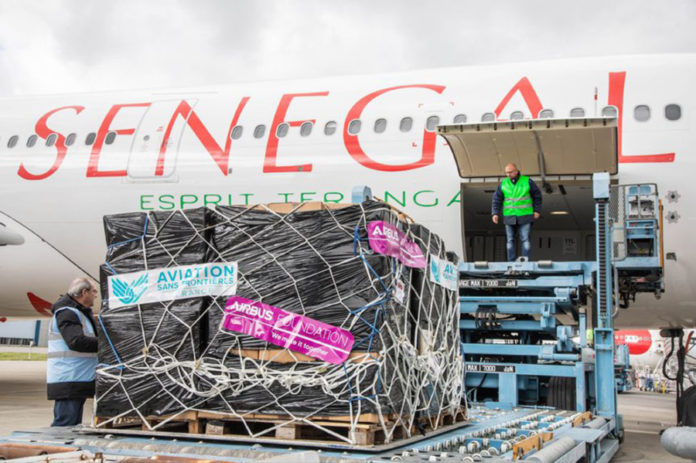Air transport activities, passenger and freight combined, are booming in Senegal after being impacted by the Covid crisis. The figures speak for themselves.
Top-of-the-range black suits, perfectly matched shirts and ties... It was with infinite elegance that a strong delegation from Blaise Diagne International Airport in Diass (AIBD, 47 km from Dakar) recently travelled to France to take part in the Senegal Economic Forum in Paris.
Organized recently by AIBD SA in collaboration with the Senegalese Embassy in the French capital, this meeting was aimed at presenting investment opportunities in Senegal, particularly in the air transport and tourism sectors. An almost pointless seduction operation, given the impressive results and assets on offer in the land of Teranga (hospitality). The figures speak for themselves.
Like air traffic worldwide, traffic at Blaise Diagne International Airport has returned to pre-Covid levels and continues to grow.
In detail, according to official Senegalese government data, the first half of 2023 saw an 18% increase in passenger traffic compared with the same period in 2022, with 1,393,093 passengers compared with 1,185,452, exceeding 2019 traffic over the period by 19%.
The quantity of freight transported in the first half of 2023 was 19,696 tonnes, compared with 18,786 tonnes in the same period of 2022, an increase of 5%.
Air transport activities (passengers and freight combined), measured in terms of aircraft movements, are following the same trend, with 13,725 flights recorded compared with 12,833 in the first half of 2022, an increase of 7%, explain the authorities of Senegal's largest airport.
And that's not all, since there was also very significant activity on the part of the airlines during the first half of the year, particularly those under Senegalese law, namely Air Sénégal, Transair and Arc en ciel.
These airlines maintained their market share observed in the first quarter, i.e. 25% of passenger traffic, 15% of freight and over 33% of local market movements.
Air Sénégal accounts for most of this market share on the hub, we are told. The growth in passenger traffic observed compared with the first half of 2022 is essentially due to the dynamism of most of the airlines operating on the hub. It should be noted that foreign airlines are not outdone in terms of activity.
AIBD reports that Royal Air Maroc (RAM) is still very active, maintaining its share of the Senegalese market with growth of 45% in the number of passengers carried and 7% in the volume of freight handled compared with the first half of 2022. The Moroccan airline now accounts for 15% of passenger traffic and 14% of freight traffic among African airlines.
Compared with all international airlines, RAM accounts for 8% of passenger traffic and 4% of freight traffic. Asky Airlines and Ethiopian Airlines have the same market share, with 8% for intra-African competition on the hub and around 4% on the overall market (including all airlines). Air Côte d'Ivoire is one point behind, with 7% of passenger traffic on the intra-African basis and 3% for all airlines.
Mauritania Airlines has a 6% market share with African competitors, and 3% overall. Kenya Airways has more or less the same volume of passenger traffic, with market shares between African airlines of around 4%, corresponding to 2% of overall traffic.
In a recent communication, AIBD also reported that among non-African foreign airlines, Air France remains the best performer, with 22% of freight traffic and 9% of passengers.
Next come Iberia and Turkish Airlines, with shares of around 5% in terms of passengers. Portugal's TAP lost a share point to stand at 4% in the 1st quarter. Last but not least, Turkish Airlines Cargo stands out with a 19% market share in freight, second only to Air France in terms of market share.
As in the first quarter," continues the same source, "Paris and Casablanca remain the cities with the most connections to and from the AIBD, confirming the substantial offer from airlines such as Air Sénégal and Air France on the Paris route, with 2 or even 3 flights a day, and RAM on the Casablanca route, with 2 flights a day.
The connection with Abidjan is the most important in the sub-region, with a 6% market share for arrivals and 5% for departures, accounting for 7% of aircraft movements in both directions.
Thanks to its strategic geographical position, favorable business environment, security and ongoing reforms, Senegal, as a future oil and gas producer, is asserting itself as a first-rate business destination". It is in this context that RAM and AIR Senegal recently signed a strategic agreement that will increase connections between Morocco and the West African country.
Khadim Mbaye :Le 360 Afrique



















0 Comments